Rank Genus | ||
 | ||
Similar Cyrtostylis, Eriochilus, Acrorchis, Chiloglottis, Microtis | ||
Orchid collection part 1 acampe acanthephippium acianthera acianthus acineta
Acianthus, commonly known as mosquito orchids, is a genus of about 25 species of plants in the orchid family, Orchidaceae. Mosquito orchids are terrestrial herbs with a single, heart-shaped, usually ground-hugging leaf and one to many small, green, pinkish or purplish flowers on a fleshy stalk. They are found in New Caledonia, Australia and New Zealand.
Contents
- Orchid collection part 1 acampe acanthephippium acianthera acianthus acineta
- Description
- Taxonomy and naming
- Distribution and habitat
- Ecology
- Use in horticulture
- Former species
- References
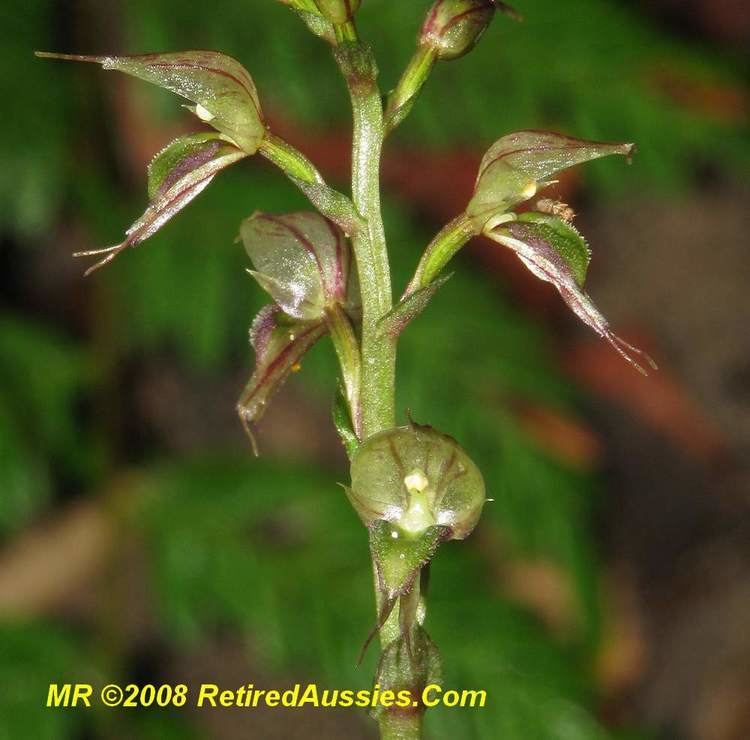
Description
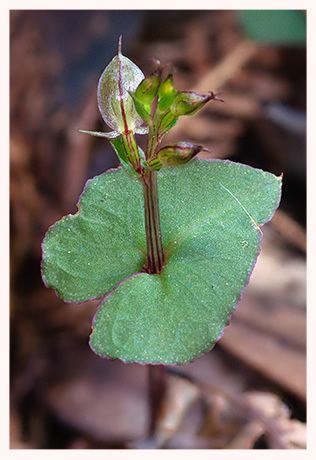
Orchids in the genus Acianthus are terrestrial, perennial, deciduous, sympodial herbs with a single egg-shaped, heart-shaped or lobed leaf at the base. They have small, roughly spherical, underground tubers from which the flower stems arise. Lacking true roots, they have root-like stolons which develop "daughter" tubers at their ends. These orchids spend the dry, summer months dormant until, following late summer or autum rains, the leaf appears. The leaf is glabrous, sometimes ground-hugging, more usually held above the ground and is often purplish-red on the lower surface. Sometimes the leaves of plants with flowers are different from those lacking them. The leaves of all Australian species are very similar, making them hard to identify to species level in the absence of flowers.
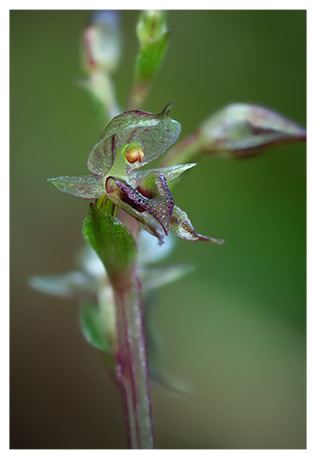
Flowers appear in the cooler months, usually in autumn, winter or spring, There are one to many resupinate small, green, pinkish or purplish flowers 4 to 5 mm (0.16 to 0.20 in) in diameter. The flowers are held on an upright, narrow but fleshy stalk, blend in with their surrounding and often resemble mosquitoes. The sepals are longer than the petals and usually have a long, thin extension on their end. The dorsal sepal is broader than the lateral ones and sometimes forms a hood over the column. The lateral sepals project forward beneath the labellum and the petals spread widely or curve backwards against the ovary. The labellum is heart-shaped and has a prominent callus. The fruit is a thin-walled, glabrous capsule, containing a large number of winged seeds.
Taxonomy and naming
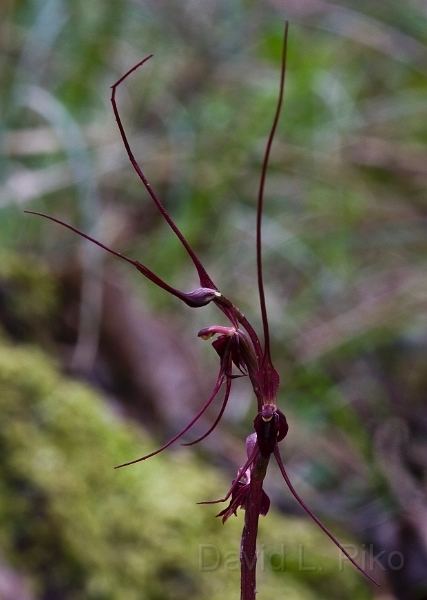
The genus was first formally described by Robert Brown in 1810 in Prodromus Florae Novae Hollandiae. He described three species (A. fornicatus, A. exsertus and A. caudatus) but did not nominate a type species. Orchids in this genus are closely related to those in the genus Caladenia. Some Australian species, formerly included in Acianthus, have been transferred to other genera, such as Acianthella.
The genus name (Acianthus) is a Latin word meaning "with pointed flowers".
Distribution and habitat
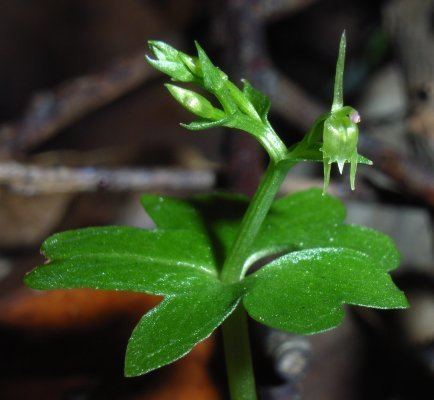
Of the 25 extant species, 15 are endemic to New Caledonia (including L'Île-des-Pins), 9 to Australia and one to New Zealand. (One species, A. ledwardii, described from Burleigh Heads in 1938, has not been seen since 1939.) Of the Australian species, 7 are found in New South Wales, 6 in Queensland, 3 in Victoria and 2 in South Australia. The sole New Zealand example, A. sinclairii occurs on both North and South Islands, as well as on Raoul, Stewart, Chatham and Three Kings Islands.
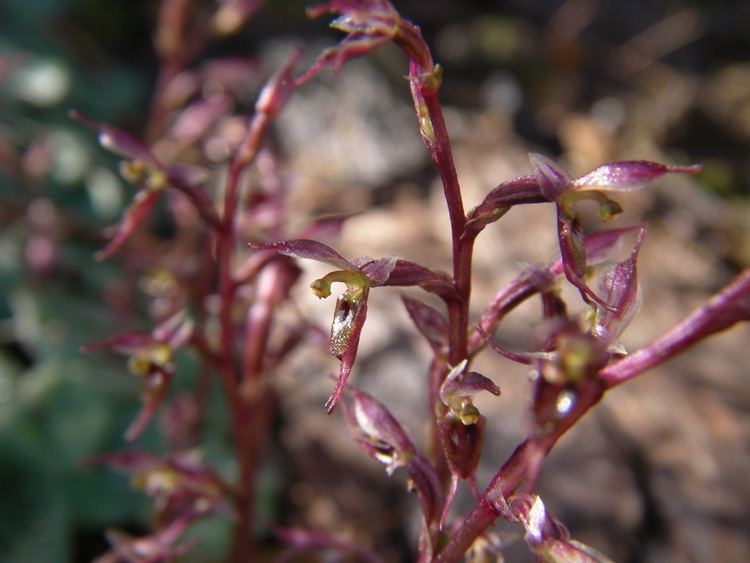
Mosquito orchids species grow in small groups in forests on decaying litter, occasionally on partially decayed logs. The sometimes form dense vegetative colonies, in sheltered forest or heathland, and are often found underneath shrubs and bracken.
Ecology
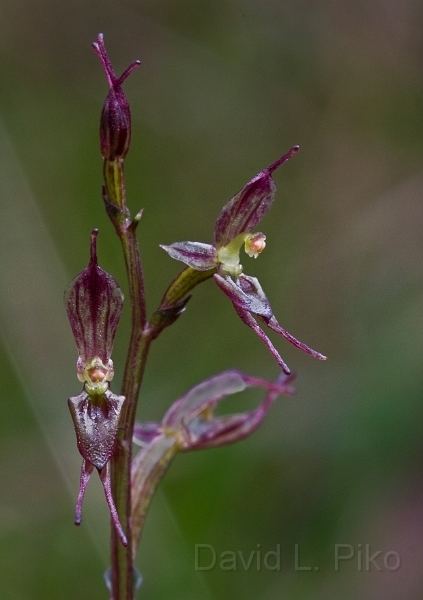
The labellum of Acianthus species produces a sweet nectar which is contained in a sunken area at the base of the labellum. The flowers of Australian species open in sequence up the flowering spike, each flower open for a few days, and are pollinated by fungus gnats from the families Anisopodidae, Sciaridae and Mycetophilidae. Usually only a small percentage of the plants in a colony have flowers. Flies on Acianthus caudatus have been observed to move up the labellum, probing with their proboscis until they reach the nectar, where the up and down "pumping" action of their bodies brings them into contact with the viscidium and pollinia which then adhere to the insect's body. When these are carried to another flower, a similar action causes the pollinia to attach to the receptive stigma.
Use in horticulture
Mosquito orchids are easy to grow in plastic or ceramic pots. They need to be watered regularly except when dormant over summer and to be repotted every one or two years.
Former species
These species were formerly placed in Acianthus but have since been transferred to other genera.
